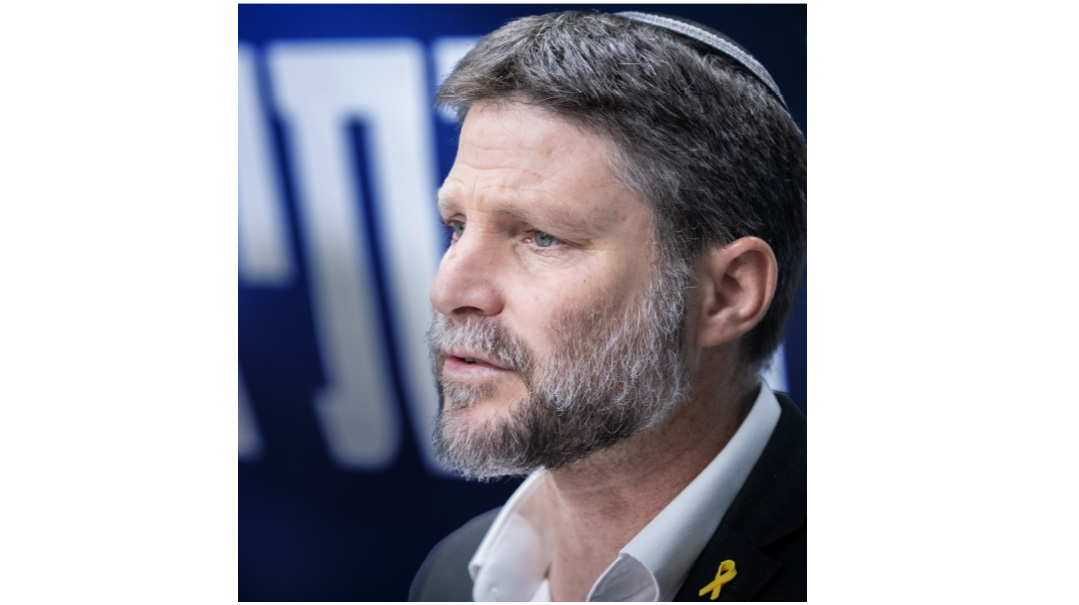Tefillah: The Gate to All Good

Tefillah is an art. Much like dancing or drawing, it must be practiced and honed to maintain its edge

One proprietor arrived would arrive early and circulate through the store, enumerating each piece of apparel slowly and deliberately. Then he’d extinguish the lights and exit the store.
The second proprietor also arrived early. Day after day, he engaged his customers, recommended styles and cuts. He inevitably had to reorder and restock popular designs, while he’d maintain an eye on evolving trends.
What’s the difference between the two stores, both of whom stocked the same merchandise at identical pricing? One is an esek chai, a flourishing business, while the other is an esek meis, an obsolete business.
Rav Uri Weissblum (He’aros Hatefillah) draws on this mashal from the Alter of Kelm to illustrate our approach to tefillah. Two people daven three times a day. Both understand the meaning of the words, and both are meticulous in enunciating every word.
But one individual’s tefillah is analogous to our unfortunate clothing proprietor; there’s no “new merchandise” filling the shelves. He may not miss a word, but they’re enunciated with the same bland expression and intent as the day before. Absent of renewed passion, intensity, and reflection, his tefillah is an exercise in “counting the merchandise.”
The second individual doesn’t suffice with simply reciting the words and understanding their meaning. He contemplates their relevance to his life and infuses them with emotion. His tefillah is as dynamic and vigorous as life itself.
The first individual will be rewarded for his consistency in davening, but the sad fact is that his supplication is an “esek meis,” a moribund endeavor. It’s not a business venture that will make him rich. The tefillah of our second friend is a pulsating, vibrant enterprise, a true “esek chai.”
The Art of Prayer
Tefillah is an art. Much like dancing or drawing, it must be practiced and honed to maintain its edge. When we say tefillah on autopilot, it suffers the fate of the esek meis: it atrophies and dies. This applies to all of our tefillah, from brachos to Pesukei D’zimra and beyond. Yet there is one part of tefillah for which it’s imperative to maintain as an esek chai: Shemoneh Esreh.
The Rambam (Hilchos Tefillah 1:1-2) teaches that we have a positive commandment to be mispallel daily. What constitutes tefillah? “The obligation of this mitzvah is to beseech daily… and to speak the praises of Hashem followed by making requests, beseeching (Hashem) to fulfill his needs and then to give praise and thanks for the boundless good He has bestowed upon him…” (ibid).
The Rambam’s three-pronged definition of tefillah — shevach (praise), bakashah (requests), and hoda’ah (thanks) — is mirrored in the structure of the Shemoneh Esreh, which begins with the brachos of shevach, followed by brachos of bakashah, and culminates in the brachos of hoda’ah. It follows that according to the Rambam, our most basic obligation in prayer is the hallowed tefillah: Shemoneh Esreh.
In addition to its halachic import, Shemoneh Esreh is a powerful player, its sphere of influence unlike any other tefillah. Rav Chaim of Volozhin (Nefesh HaChaim 2:13) explains that Shemoneh Esreh, compiled by the Anshei Knesses Hagedolah, is a tefillah unparalleled in its effect on the upper and lower worlds. In fact, every time a person davens Shemoneh Esreh, his tefillah effects tikkun on the entire universe, including ourselves and our loved ones.
And the impact we unwittingly make is ever-changing: “From the time [the Anshei Knesses Hagedolah] compiled this tefillah, until the arrival of Mashiach… there has never been, and never will be, a single [Shemoneh Esreh] tefillah [whose impact] duplicates another” (ibid).
What a shame if this powerful tefillah endures as an esek meis!
Meeting Ourselves
Shemoneh Esreh functions as a duality: We simultaneously meet our Maker and meet ourselves.
The concept of meeting our Maker through davening is familiar to most of us; davening is our daily opportunity to appeal to Hashem for our wants and wishes. But do we realize how crucial this is?
We assume that many things in life are givens: baseline intellectual functioning, presence and support of family and friends, a roof over our heads, our ability to speak, see, hear, and move. We consider ourselves “deserving” of these “basics.” Surely we don’t have to daven for them! Davening is reserved for the “extras”: a job promotion or parnassah windfall, refuah for a complex medical condition, an outstanding shidduch.
Rav Shimshon Dovid Pincus ztz”l (Shearim B’tefillah) shatters this common tefillah misconception: Not only must we employ tefillah to “convince” Hashem to fulfill requests we may not deserve by our merits alone, “there is another basic principle to tefillah… for tefillah is the gateway and entrance to the treasures in Shamayim… even if a person merits, through his actions, or through Hashem’s goodwill, brachah or salvation, and that goodness is indeed prepared and ready for him, it will only be dispatched [by way of] tefillah. For this is the principle of tefillah; it’s the gate through which everything must pass. Without passing this gateway, nothing will be actualized.”
Suddenly, meeting our Maker at Shemoneh Esreh assumes a critical dimension: There are no givens; it’s imperative I daven for the things I think I deserve, as well as for the extras! For all I know, there may be bountiful good with my nametag on it in Shamayim, patiently awaiting release through the “customs gate” of tefillah.
Facing the Source
“Eizo hi avodah shebalev? Zo tefillah” (Taanis 2a). Tefillah is termed avodah, service of Hashem. However, when I daven, I’m generally focused on the wants and needs on my bucket list of unfulfilled desires. Isn’t avodah meant to be Hashem-focused, not me-focused?
We live in world that presents as cause and effect: If I study, I succeed on my test. If I do well in school and secure the right recommendations, I’m accepted to a good graduate program. If I do well in grad school, I get a good job. If I get a good job, I have parnassah.
If my daughter does well in school, she’s accepted to a top seminary. If she maintains her good name (and doesn’t gain too much weight), she’s considered prime shidduch material. If our family’s profile appeals to the “right” shadchanim, and we offer ample support, she’ll be suggested top-notch boys. If she dates said boys, she’ll get married without delay.
The extent to which we buy into this cause-effect mindset is deeply disturbing. Apparently Rav Simcha Zissel of Kelm recognized our propensity for cause-effect attribution as well. He teaches that davening avoids this fabrication by forcing us to attribute everything to Hashem. And this is indeed an avodah!
If I study, I succeed… or “Atah chonein l’adam daas.”
If I find the top doctors and follow their instructions, I get well… or “refaeinu, Hashem, v’nerafei.”
If my husband clinches the deal and gets the promotion, I’m financially secure… or “bareich aleinu, Hashem Elokeinu.”
If I vote for the right person, Israel will be secure… or “v’Lirushalayim ircha b’rachamim tashuv.”
When so much of life, from dawn to dusk, indicates otherwise, the avodah in tefillah is remembering the true Cause of it all. And it’s a real avodah to make such a monumental paradigm shift.
This is the avenue of tefillah where we meet ourselves. How do I regard Hashem’s role in the cause-effect pretense of this world? How do I relate to the role my obligatory hishtadlus plays vis-á-vis Hashem? Who do I believe is the prime mover of it all? Tefillah is my daily self-check, where I meet my genuine self in the ancient words affirming His sovereignty.
The word “l’hitpallel” comes from the root “pillel,” judgment, as in “vayaamod Pinchas, vayepallel” (Tehillim 106), and Pinchas stood in judgment. L’hitpallel is an act of self-evaluation and judgment. Rav Yehonasan Eybeschutz adopts a unique approach to the self-evaluation inherent in the Shemoneh Esreh. He explains that with each bakashah, shevach, and hodaah of tefillah, we’re essentially taking stock of how we have lived up to the message within the brachah.
Reframing my tefillah as avodah may be challenging, but it will also be exhilarating. Join me, as together we work toward developing our Shemoneh Esreh into a true esek chai.
Mrs. Elana Moskowitz has been teaching in seminaries for nearly 20 years.
(Originally featured in Family First, Issue 767)
Oops! We could not locate your form.



